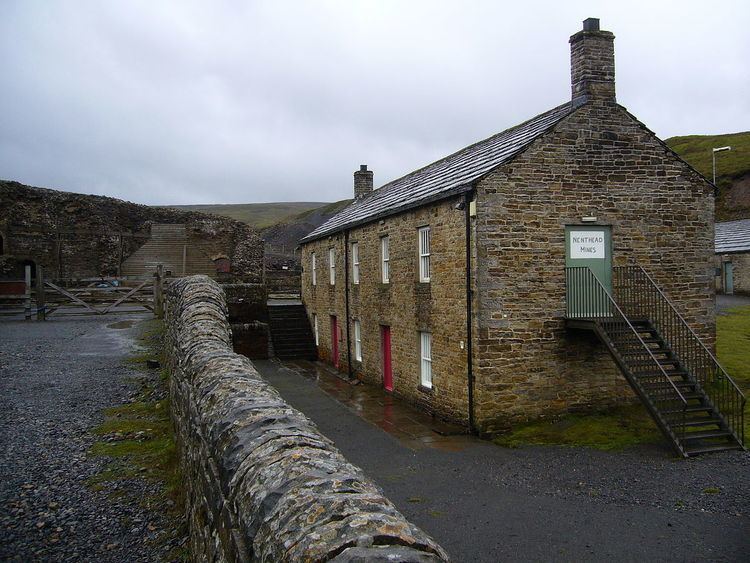Population 2,074 Sovereign state United Kingdom Local time Friday 1:49 AM | OS grid reference NY785435 Post town ALSTON Dialling code 01434 | |
 | ||
Weather 1°C, Wind SE at 19 km/h, 90% Humidity | ||
A solo trip down the famous brewery shaft at nenthead mines
The small village of Nenthead in the county of Cumbria is one of England's highest villages, at 1,500 feet. It was not built until the middle of the 18th century and was one of the earliest purpose-built industrial villages in Britain. Nenthead was a major centre for lead and silver mining in the North Pennines of Britain. The first smelt mill was built at Nenthead in 1737 by George Liddle, and this was subsequently expanded by the London Lead Company. By 1882 the smelt mill was capable of smelting 8,000 bings of ore per annum.
Contents
- A solo trip down the famous brewery shaft at nenthead mines
- Map of Nenthead Alston UK
- Nenthead model village february 2013
- Zinc deposits
- References
Map of Nenthead, Alston, UK
Nenthead in 1861 was a bustling village of some 2,000 people, mostly Methodist and employed by the Quaker-owned London Lead Company in the Nenthead Mines - some of the most productive in the country. The benevolent Quakers built, amongst other things, housing, a school, a reading room, public baths and a wash-house for the miners and their families. Nenthead was the first village in the UK to have electric street lighting from excess power generated by the mines. The mines were responsible for as many good things as well as bad, life expectancy was short but the children were being educated.
For many mine explorers Nenthead is a mecca as many miles of accessible mines remain. It features some of the most stunning mines in the country with several horse whims and a 260 foot engine shaft in Rampghill. The mines closed in 1961 and there is a heritage centre displaying their history.
The economy of the village is based on tourism and it is the headquarters of a bus & coach operator. England's most popular long distance cycle route, the C2C, passes through Nenthead. The Grade 2 listed Wesleyan Methodist chapel has not been used since 2002 but a recent Heritage Lottery Grant of £134,500 has raised hopes of it becoming a cafe and community hub. The post office and community shop occupies the building which was once a reading room for the miners.
County Council subsidies have maintained limited bus services for the village to Alston and beyond. However in 2014 cuts to these subsidies were being discussed, threatening the existence of bus services for the village.
Nenthead model village february 2013
Zinc deposits
In 2013 the Canadian mining company Minco sunk five 1,640 foot (500m) -deep boreholes in an effort to discover the extent of zinc deposits beneath Nenthead. Although test drilling could go on for several years, the company believes that the village may be sited on huge deposits of the chemical element. The zinc is 490 feet below the surface and was previously too deep to reach by old mining techniques.
